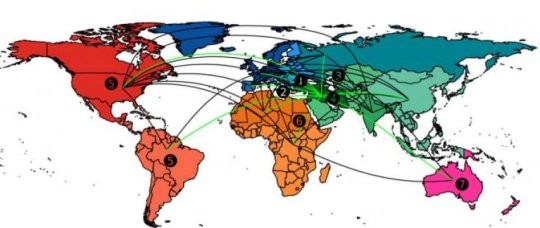[ad_1]
First they mapped the genome of wheat; now they have reconstructed its breeding history. Joining forces with other European researchers, scientists at the Helmholtz Zentrum München have examined the genetic diversity of wheat varieties in the WHEALBI study. By doing so, they discovered which cereals our ancestors cultivated, where today’s wheat comes from, and what the Cold War has to do with it all. The results were recently published in the journal Nature Genetics.
As the population grows and climate change progresses, food resources could become scarce in future. In view of the impending scenarios, plant breeders are faced with the challenge of improving the yield of crop plants. Can existing varieties be optimized through breeding? To help boost the yield of today’s sorts, an international team of scientists studied the genetic diversity of various wheat varieties and in doing so have discovered astonishing relationships with human sociocultural history.
Scientists at Helmholtz Zentrum München were involved in the large-scale WHEALBI study, funded by the European Union. Along with teams from France, Italy, Hungary, Turkey and other European countries, they analyzed the genomes of 480 wheat varieties, including wild grasses, ancient grains and modern high-performance types. In addition to learn about the evolution and cultivation of today’s bread wheat, the geneticists also linked the development of wheat to geographic and geopolitical events in human history.
Modern bread wheat originated around 10,000 years ago in the region of modern-day Turkey from a cross between durum wheat and a wild grass (Aegilops tauschii), while the grain we call spelt stems from cultivated emmer and various types of bread wheat. “The occurrence of cultivated plants is closely linked to human migrations over the millennia,” says bioinformatician Michael Seidel, along with Daniel Lang one of the lead authors of the study. Both researchers work in the Plant Genome and Systems Biology group (PGSB) at the Helmholtz Zentrum München.
The PGSB team identified three gene pools in the bread-wheat varieties used today that are closely linked to historical events: one from high-yielding varieties domesticated in the near east that spread as part of the green revolution and two separate gene pools from Western and Central Europe. They diverged between 1966 and 1985 as a result of geopolitical and socio-economic separation during the Cold War. With the fall of the Iron Curtain in 1989, the wheat lines gradually admixed again, as their genomes reveal.
Even the emergence and expansion of the European Union can be seen in the genome of today’s wheat. Wheat lines that used to be cultivated mainly in Central Europe are now used throughout Europe. “These examples demonstrate the influence of humans on the distribution and evolution of crop plants — beyond their actual development into cultivated plants,” as bioinformatician Lang of Helmholtz Zentrum München stated.
Knowledge of the genetic diversity of wheat is a prerequisite for optimizing modern wheat varieties. Familiarity with the key characteristics for breeding is the essential precondition for rendering future varieties more productive and meeting the demands of a growing world population and imminent climate change. Together with corn and rice, wheat ranks as one of the world’s three most important staple foods. Growing wheat in spite of dwindling soil and water resources in potentially challenging climatic conditions could become vital in the future.
Consequently, the researchers involved in the WHEALBI study identified previously unknown genes that influence the yield, flowering time, height and stability of wheat plants. For corresponding author Georg Haberer of the PGSB this is just the beginning: “We expect a large number of further studies that will make good use of these findings for breeding research.”
[ad_2]















